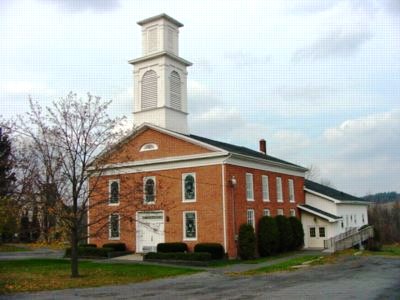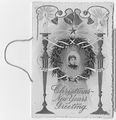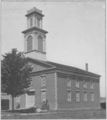St. Paul's Lutheran Church
Jump to navigation
Jump to search
History
- 1765 - Dominie Peter Nicholas Sommer, a Lutheran pastor born in Germany who lived and ministered in Schoharie in the 18th Century, provided the earliest known Lutheran ministry in Beaver Dam - now the Town of Berne. His journal says:
- February 1765. I preached for the first time in Johannes Zeh’s house and administered the Lord's Supper.
- April 1766. I administered the Lord’s Supper at Beaverdam.
- 1790 - The church was incorporated as the "German Lutheran Congregation of Rensselaer Ville,"[1] and early services and records were in German. The first trustees were Christian Sand, Frederick Warner, and Christian Zeh, a son of Johannes, at whose house Dominie Sommer had administered Communion in 1765.
- ca. 1795 - since there was no hamlet in the area, the simple frame church was built near the Zeh and Warner homesteads, halfway between what are now the hamlets of Berne and East Berne, just east of the present-day Pine Park residential area (site of the Pine Grove Cemetery (Lutheran Church Cemetery)).
- 1835 - the present brick church was constructed just west of the new hamlet of Bern. According to Our Heritage, in 1835 a search was made to find a source for making the bricks to build the Lutheran Church, and it was on the farm of Peter Bassler that a clay bed was found to provide the material for making the bricks. The bank of clay formed a part of west side of the knoll where the Beaverdam Cemetery is located. The bricks were made and burned on the site. They then were hauled by team and wagon to the church site, and it is reported that this task of hauling was accomplished in a day. The early church had box like pews with a door to each pew. (In 1959 92-year-old Stanton Dietz wrote a very good description of the early church in a letter sent to Reverent Russell B. Greene, Sr., the pastor of the church. A copy of this letter may be found in the Berne Historical Center.)
- 1845 - This red brick church was the organizational site of the first New York Anti-rent War convention. As the anti-rent feelings rose to their highest pitch, the first Anti-Rent Convention in the State was held here on January 15 – 16, 1845. Tin Horns and Calico, written by Henry Christman, is a book telling of the anti-rent feelings and happenings. Approximately 150 delgates from 11 counties, representing tenants of New York's vast estates, met here to discuss their common grievances. The following year the state adopted laws that resolved much of the anti-rent issue. The major anti-rent topic was that the landowners of Berne and the surrounding towns did not want to pay rent to the Van Rensselaer family as had been the custom under the Patroon System when the land was first distributed. Their opposition led to sheriffs being sent out to collect the rent and direct conflict with the local landowners, but it also had political repercussions. Because of the farmers’ stand against rent, the State Constitution was changed, abolishing the Patroon System. It is suggested that anyone interested in the history of Berne read Tin Horns and Calico.
- 1873 - St. John's Evangelical Lutheran Church at East Berne, N.Y. was organized so that members of St. Paul's who lived in East Berne would not have to travel to Berne over the bad roads of the time, especially in bad weather. Instead, only the pastor would make the journey between the hamlet of Berne and East Berne.
- 1915 - a hall was added to the rear of the church. The present hall is a recent replacement.
- 2010 - the church was again joined with St. John's Lutheran Church of East Berne. The name Helderberg Lutheran Church was chosen so that the location of the church in the Helderbergs would be part of the name. The church meets in the former St. Paul's church building in the hamlet of Berne.
Photo Gallery
- ↑ Before the Town of Berne was created in 1795, the area was called Beaverdam, or the Beaver Dam. In 1790 the area became the Town of Rensselaerville, which encompassed all of the Hilltowns.






















